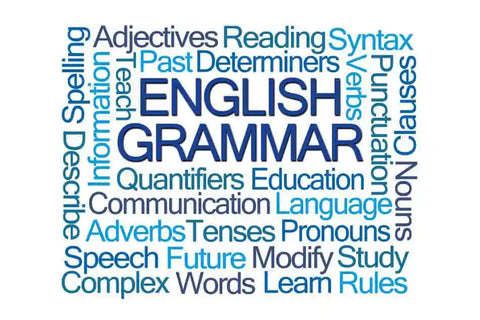Coordinating Conjunctions in English: And, But and Yet
The English language boasts seven coordinating conjunctions that are immensely useful to scholars who write to disseminate their research. In alphabetical order they are AND, BUT, FOR, OR, NOR, SO, and YET, with the capitalisation used here for clarity only. As their name implies, coordinating conjunctions join two or more clauses, phrases or words in a way that gives equal emphasis and equal syntactic importance to all of the joined elements. This does not mean, however, that coordinating conjunctions cannot express contradiction, progression or effect; indeed, some of them do those very things. It also does not mean that they are always easy to use, particularly for those who are new to writing in English. In the following notes I provide some tips on using AND, BUT and YET, and I offer some examples of correct usage as well.
AND is probably the most commonly used of all coordinating conjunctions. It adds things together, so it is often used to join independent clauses into compound sentences, as in ‘The professor wrote the paper, and his assistant proofread it carefully.’ A comma is often used before the conjunction, but may not be necessary in short sentences, especially when the subject remains the same: ‘The professor wrote the paper last week and this week she submitted it for publication.’ AND can also be used in a list or series such as ‘The professor wrote the paper, edited it carefully and submitted it for publication.’ A comma might be used before the conjunction here if preferred by the author, indicated by guidelines or required for clarity.
BUT joins independent clauses as well, but it expresses a contrast or contradiction between the first and the second clause, as in ‘The professor wrote the paper, but he did not edit it’ or ‘She followed most of the guidelines, but she neglected some of them.’ As a general rule a comma should be used before this conjunction in such constructions, but some authors do so only when the comma is necessary for clarity. Other constructions that use the conjunction BUT do not require a comma, so when it bears the meaning ‘except,’ no comma is needed: ‘The child was so upset when the doll broke that she could do nothing but weep.’ The proverbial ‘It never rains but it pours,’ conveying metaphorically the concept that whenever troubles come they come in droves, is similar in not requiring a comma. If one is added, the meaning changes. ‘It never rains, but it pours’ will be read literally with the meaning that it does not simply rain in whatever place is specified, but pours instead.
YET in its role as a conjunction is very similar to BUT. It joins clauses to express a contradictory or contrasting concept that follows the preceding idea in a logical fashion. ‘He always seems to proofread his papers carefully, yet he never catches all the errors’ is a good example of the effective use of YET. Shorter phrases and words can be similarly joined by this conjunction, as in ‘She had a desire for perfection, yet no patience at all’ and ‘He was wise, yet careless.’ Remember when you are using conjunctions that they most correctly appear in the midst of sentences to join other parts of speech. Spoken and informal written English frequently place them at the beginning of sentences, but this is still considered poor style by some readers, such as acquisitions proofreaders and university instructors, and a more formal style is usually required for scholarly writing. It is therefore wise to avoid the use of conjunctions at the beginning of sentences except in rare circumstances for effect, and the rarer such constructions are in your prose, the more effective they will be.
Why Our Editing and Proofreading Services?
At Proof-Reading-Service.com we offer the highest quality journal article editing, dissertation proofreading and online proofreading services via our large and extremely dedicated team of academic and scientific professionals. All of our proofreaders are native speakers of English who have earned their own postgraduate degrees, and their areas of specialisation cover such a wide range of disciplines that we are able to help our international clientele with research editing to improve and perfect all kinds of academic manuscripts for successful publication. Many of the carefully trained members of our manuscript editing and proofreading team work predominantly on articles intended for publication in scholarly journals, applying painstaking journal editing standards to ensure that the references and formatting used in each paper are in conformity with the journal’s instructions for authors and to correct any grammar, spelling, punctuation or simple typing errors. In this way, we enable our clients to report their research in the clear and accurate ways required to impress acquisitions proofreaders and achieve publication.
Our scientific proofreading services for the authors of a wide variety of scientific journal papers are especially popular, but we also offer manuscript proofreading services and have the experience and expertise to proofread and edit manuscripts in all scholarly disciplines, as well as beyond them. We have team members who specialise in medical proofreading services, and some of our experts dedicate their time exclusively to dissertation proofreading and manuscript proofreading, offering academics the opportunity to improve their use of formatting and language through the most exacting PhD thesis editing and journal article proofreading practices. Whether you are preparing a conference paper for presentation, polishing a progress report to share with colleagues, or facing the daunting task of editing and perfecting any kind of scholarly document for publication, a qualified member of our professional team can provide invaluable assistance and give you greater confidence in your written work.
If you are in the process of preparing an article for an academic or scientific journal, or planning one for the near future, you may well be interested in a new book, Guide to Journal Publication, which is available on our Tips and Advice on Publishing Research in Journals website.








